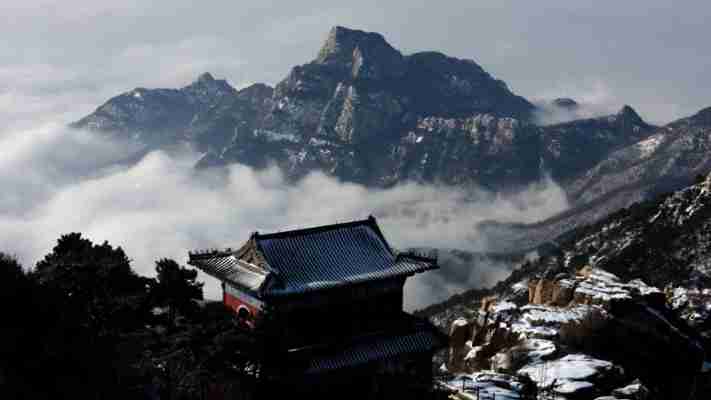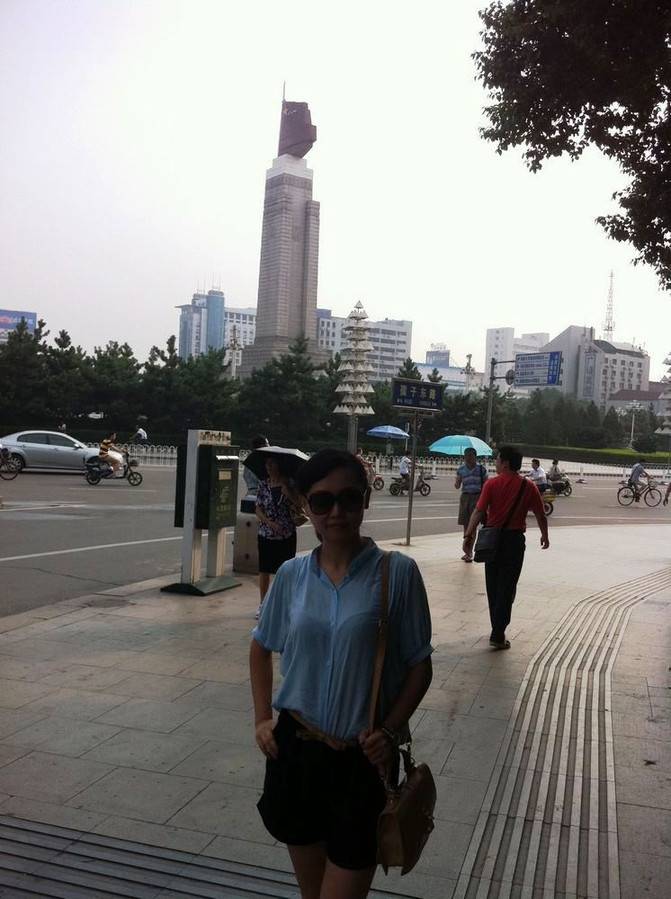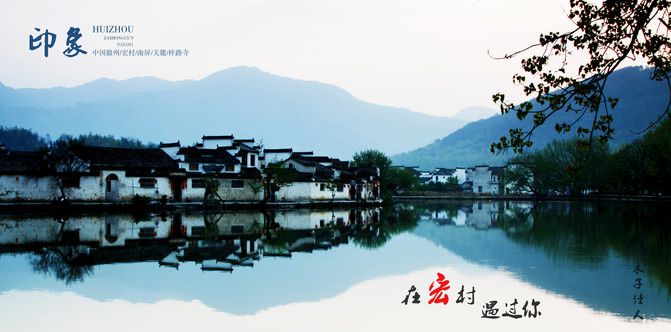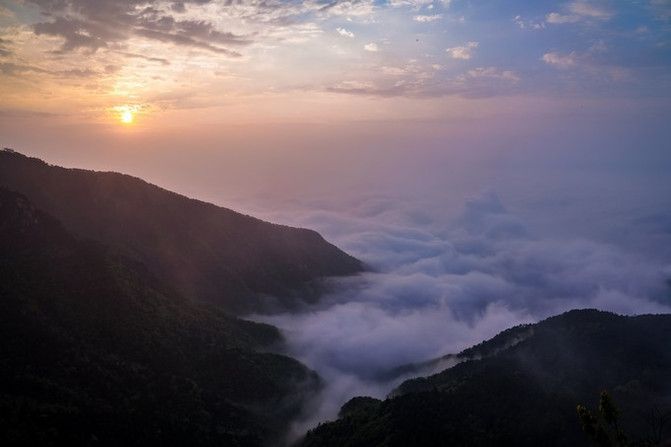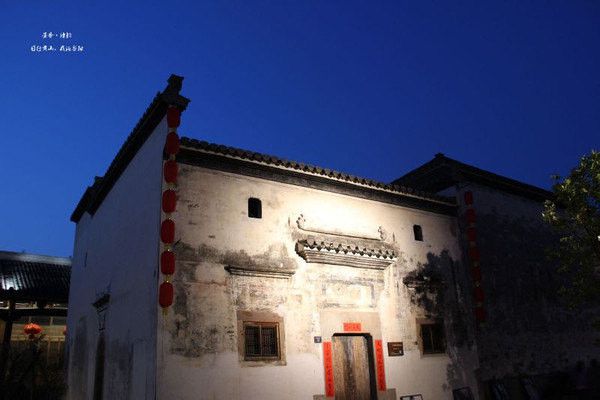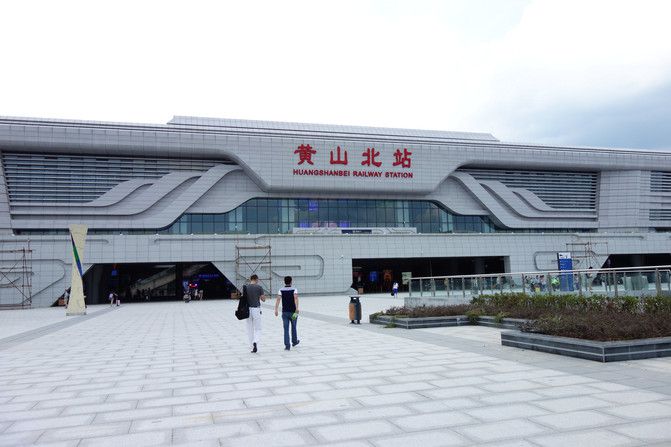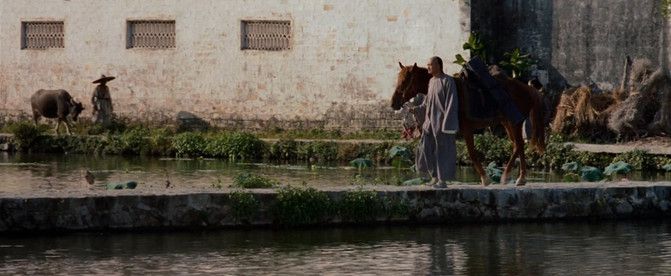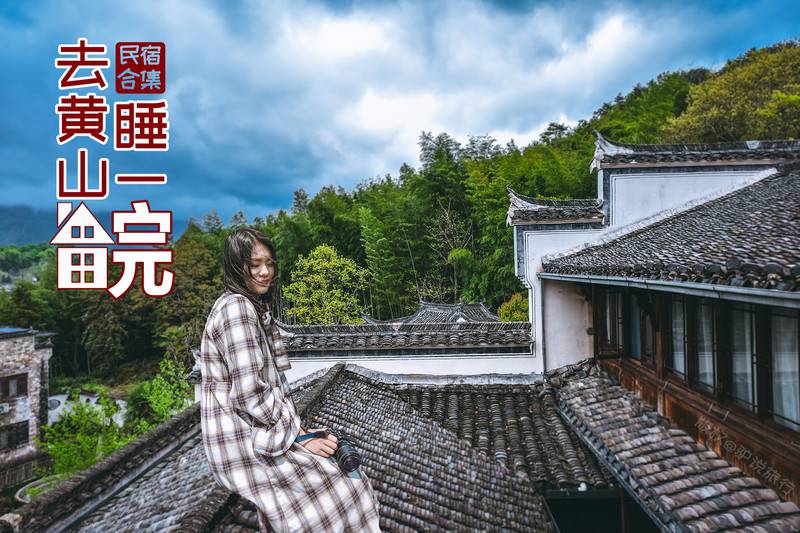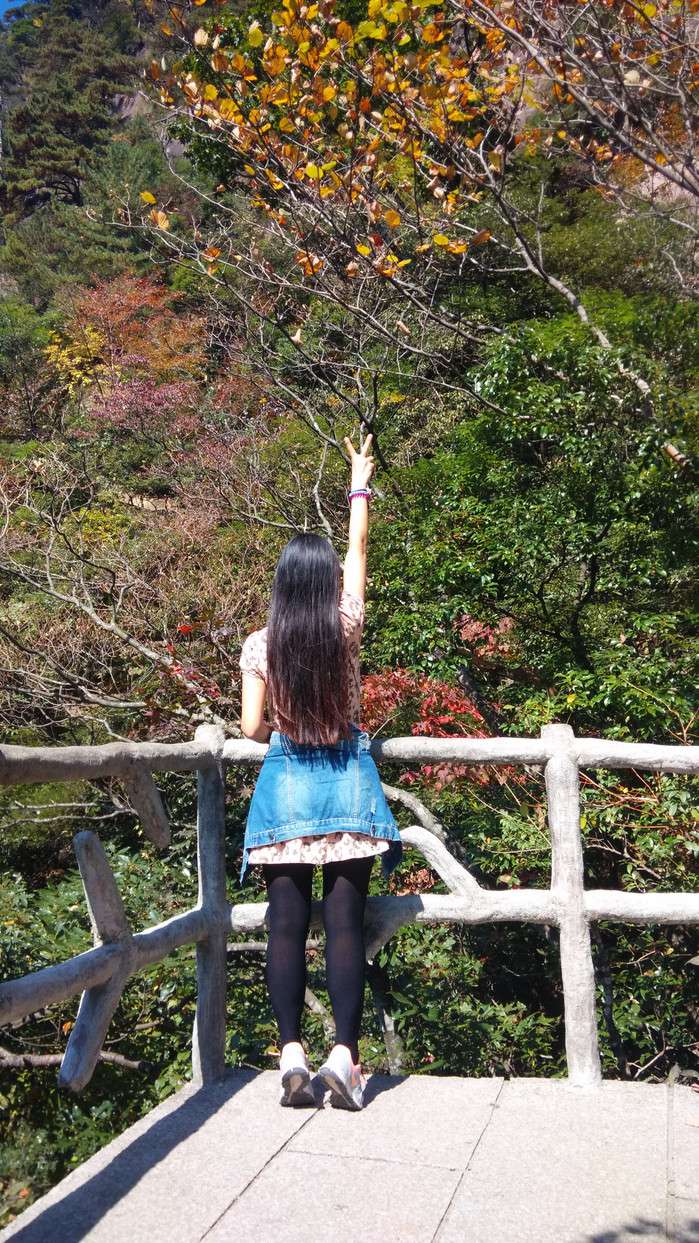February 03,2023 Post by :Ruoshui Chen
Mount Tai wins China Top 300 Smart Scenic Spots titleTop 13 Mount Tai Attractions - Things to Do in Mount Tai
Located in Tai'an City, Shandong, Mount Tai (aka Taishan Mountain), is regarded as the greatest of the Five Sacred Mountains in China, and listed as a UNESCO World Natural & Cultural Heritage Site in 1987. The highest Jade Emperor Peak is recorded about 1545 meters above sea level. Hiking uphill you can trek along the worshiping spots path the ancient Chinese emperors had come for; Reaching the top, you can have a panoramic view of the whole Taian city and enjoying the stunning sunrise and sunset, and it is recommended to spend 2 full days exploring the best highlights of Mount Tai including the Daimiao Temple (Museum of Taian City) at the foot of Mount Tai. You can also visit Mount Tai in a single day by taking sightseeing bus to Zhongtianmen, then hiking to the summit and descending by cable car.

✔ 2 Days Most Classic Mount Tai Hiking Tour
✔ 2 Days Enjoyable Mount Tai Hiking Tour
Taking a high-speed train and spending 2 more days, you can extend your trip to the nearby “City of Spring”, Jinan which nourishes a number of famous springs and lakes of China, such as Baotu Spring Park, Daming Lake, Black Tiger Spring, etc. Also, about 85 km to Mount Tai is Qufu, the hometown of the greatest sage of China, Confucius, and you may understand the deep-rooted Chinese culture as you stepping into the Confucius Temple, Kong Forest, and Kong Mansion.
✔ 2 Days Taishan & Qufu Tour from Beijing by Bullet Train
✔ 3 Days Confucius Culture Exploration with Sidetrip to Mount Tai
✔ 4 Days Cultural Discovery in Jinan, Taishan & Qufu
Besides these cities near Mount Tai, Shandong greets you with not only the splendid culture but also the beautiful coastlines. The refreshing ocean air from Qingdao blows the fragrance from the old Beer factories; the colorful kites fly over the city Weifang and swans in pairs nestle in the havens of Weihai by the shimmering sea...all of these highlights of Shandong can be covered in about 8 days. Beyond Shandong, travelers often extend trip further to Beijing, Xian, Datong & Pingyao (in Shanxi), Luoyang & Shaolin Temple & Kaifeng (in Henan) and more stunning heritages and nature sights in China.
✔ 6 Days Jinan, Qufu, Mount Tai & Qingdao Tour
✔ 9 Days Beijing Shanghai Speed Train Tour with Confucianism Exploration
✔ 9 Days Shandong Panorama Tour
✔ 11 Days China World Heritage Tour in North China
Travel with China Discovery
China Discovery is an experienced, professional, and reliable travel companion devoted to offering high-quality and the best tour services for all travelers to China. In order to have a hassle-free journey and focus on the trip itself, it’s highly recommended traveling with China Discovery. So, you can enjoy convenient airport pick-up and drop-off service and transportation to all scenic spots in a safe, clean, comfortable, air-conditioned, and non-smoking vehicle. Also, we will arrange a knowledgeable local tour guide, excellent accommodation, and dining arrangements to ensure you rest well and get a better understanding of springs culture in Jinan, Confucianism in Qufu, and Mount Tai culture in Shandong. You may select a favorite from our most popular Mount Tai tours or contact us to design a unique itinerary according to your personal time and preference.
Mount Tai — Your Travel Guide for the Renowned China Peak
Mount Tai Mount Tai
Mount Tai, located just north of Tai'an city in East China's Shandong province, is a mountain of historical and cultural significance, with impressive views and beautiful natural scenery. It's just 50 km (30 miles) south of Shandong's capital Jinan, so access is convenient.
The word tai in Chinese means stability and peace and the name Tai'an is attributed to the saying: "If Mount Tai is stable, so is the entire country" (both characters of Tai'an have an independent meaning of stability and peace). Mount Tai is crowned by Jade Emperor Peak (in Chinese mythology, the Jade Emperor is the most powerful god in heaven) with an altitude of 1,545 meters.
The formation of Mount Tai dates back to the Archeozoic Era, and now it is growing at the speed of 0.5 millimeters per year. It faces the Yellow Sea to the east and the Yellow River to the west, and is in the neighborhood of Confucius' hometown, Qufu, and the City of Springs, Jinan. In 1987, Mount Tai was listed as both World Natural Heritage and World Cultural Heritage by UNESCO.
Leader of the Five Sacred Mountains
Mount Tai, leader of the five sacred mountains Mount Tai, leader of the five sacred mountains
Among the Five Sacred Mountains of Taoism (the other four are Heng Mountain of Hunan Province, Hua Mountain of Shaanxi Province, Song Mountain of Henan Province and Heng Mountain of Shanxi Province), Mount Tai is only the third highest. Why it is seen as the leader of the Five Sacred Mountains? In absolute terms Mount Tai can not be considered as the highest of China's mountains, but because it is close to the sea and rivers and rises abruptly from the relatively low rolling hills and Qilu plains, its relative height is quite impressive, with an altitude difference of 1395 meters within nine kilometers. Moreover, in Chinese culture, east is regarded as a sacred direction, since it is where the sun and the moon rise. Therefore Mount Tai is often regarded as the first of the Five Sacred Mountains. It is associated with sunrise, birth and renewal.
For thousands of years, Mount Tai has been the sacred mountain where Emperors held the ceremony of offering sacrifices to heaven and earth to pray and say thanks for peace and prosperity. Seventy-two emperors are said to have performed mountain worship ceremonies on Mount Tai. Among them, Emperor Wu of the Han Dynasty had visited Mount Tai eight times. It is the first and foremost thing for emperors to do when they ascend to the throne, because Mount Tai is seen as the symbol of the county's peace and prosperity.
Mount Tai held a sacred position in state politics, and also enjoyed a high status in the world of Taoism and Buddhism. The temples on its slopes have been a destination for pilgrims for 3,000 years. View famous mountains in China.
Natural Beauty
Natural scenery of Mount Tai Natural scenery of Mount Tai
Featuring antiquity, grace, serenity of seclusion, risk and wonder, Mount Tai boasts 156 peaks, among which Jade Emperor Peak, Heaven Candle Peak and Sun Viewing Peak are the most famous; 138 cliffs, the highlight of which is Fan Cliff; 72 caves; 72 grotesque stones, among which the Immortal Bridge is the most distinctive; 130 streams; 64 waterfalls, including the renowned Dragon Pool Waterfall, Yunqiao Waterfall and Santan Waterfall; and 72 springs. It lies in the zone of oriental deciduous forest, with about 80 percent of its area is covered with vegetation. The flora is known to comprise almost 1,000 species. Some of the trees in the area are very old and have cultural significance, such as the Han Dynasty Cypresses, which were planted by Emperor Wu of the Han Dynasty, Tang Chinese Scholar Tree (about 2,100 years old), Welcoming Guest Pine (500 years old) and Fifth Rank Pine, which was named originally by Emperor Qin Shihuang, but was replanted about 250 years ago.
Its distinctive natural environment gives Mount Tai four natural wonders: Sunrise on Mount Tai, Rime and Glaze Scenery, "Buddha's Light" on Mount Tai and the Sea of Clouds.
Cultural and Historic Relics
Well preserved buildings on the mountain Well preserved buildings on the mountain
The majesty of Mount Tai has profoundly moved many visitors at all periods of history: the emperors who claimed they were the sons of heaven, the proud high-ranking officials, brilliant poets, Buddhists, Taoists and ordinary people too. They left numerous cultural and historic relics. There are in total 2000 historical relics. There are 58 ancient building complexes, which are mainly in Ming and Qing Dynasty style, and 29 are well-preserved. They built at the foot of Mount Tai and along its slopes; among which Dai Temple, Bixia Temple, Hong Mountain Gate, Nantian Gate and Daizhong Arch Gate are masterpieces among ancient Chinese buildings and the representation of China's culture of thousands of years. Interestingly, from Dai Temple, (the place for offering sacrifice to the Emperor of Earth) located at the foot of Mount Tai, to Jade Emperor Summit, the temples built along the slopes are said to compose a ten-kilometer road from the nether world to heaven.
Besides, there are countless inscriptions on the cliffs and steles from historic celebrities, using such laudatory descriptions of Mount Tai as "towering majesty in the east”, "supporting the sky and holding up the sun” and "as lofty as heaven”.
Jade Emperor Peak
Jade Emperor Peak (in Chinese mythology, the Jade Emperor is the most powerful god in the heaven) is the summit of Mount Tai. The city of Tai'an, at the foot of Mount Tai, is 153 meters above sea level, while the Jade Emperor is 1545 meters above sea level, with the sharp altitude difference of 1392 meters offering tourists a breathtaking bird's eye view of the entire area. It is also called Taiping Peak (Peace Peak) and Celestial Pillar Peak, and has long been known as the First Peak under Heaven.
It is located to the north of Bixia Temple and there lies Jade Emperor Temple, which was built in honor of the Jade Emperor of Taoism. There is a big stone in the middle of the yard in front of the temple, with the engraving: "The Summit of Mount Tai 1545 meters". The height could not be checked when it was first erected. The height of Jade Emperor Peak is now reported as 1532.7 meters. Rebuilt during the Ming Dynasty, it consists of Jade Emperor Hall, housing the bronze figure of the Jade Emperor; Sun View Pavilion, lying to the east where tourists can enjoy the sunrise; River Enjoyment Pavilion, to the west, which is a perfect place for tourists to appreciate sunset clouds and the golden belt of the Yellow River.
Bixia Temple
Bixia Temple (Azure Cloud Temple) is located south of the summit of Mount Tai, Jade Emperor Peak, east of Heavenly Street, and 6.5 kilometers away from Dai Temple. It was firstly built at the year of 1008 during the Song Dynasty and was originally called Zhaozhen Temple. It gained the present name Bixia Temple at the year of 1770 during the Qing Dynasty after a restoration.
It is a grand building complex set among high mountains which consists of twelve pieces of distinctive architecture. Bixia Temple has a compact overall arrangement and the buildings are arranged along the medial axis symmetrically. When looking up at it from Heavenly Street, the temple is surrounded by clouds. If looking down on from the summit, its palaces and halls hide between the peaks. It is the one of the masterpieces among Taoist buildings and represents the high constructing level of ancient Chinese architecture.
As one of the Chinese mythologies goes, Bixia Temple was the heavenly residence of the Goddess, Yuanjun (Supreme Monarch). Goddess Yuanjun is also called the Mother of Mount Tai who might bring good luck to people especially to women and children according to Chinese mythology. She is said to be the daughter of the God of Mountain.
The temple consists of two courtyards. A gilded bronze sculpture of Goddess Yuanjun is housed in the main hall of Bixia Temple. Because of the fog and rain on the high mountain, wood is vulnerable to decay, and the tiles can be easily wrecked by the strong wind, therefore the tiles and other parts of the temple were made of iron. In the early period of Qing Dynasty, the iron tiles were replaced with bronze tiles. In terms of scale and materials, the Bixia temple stands out from all structures at the top of Mount Tai.
Dai Temple
Dai Temple, located at the south foot of Mount Tai, is the largest and best-preserved ancient building complex in the scenic area of Mount Tai. It was firstly built during Han Dynasty and greatly expanded during Tang, Song Dynasties. It is a Taoist temple where emperors during the past dynasties offered sacrifice to the God of Earth to pray and say thanks for peace and prosperity. Dai Temple is in the palace style of ancient Chinese emperors, to compose over 150 ancient buildings in many kinds. It together with the Forbidden City in Beijing, "Three Kong” (Confucius Temple, the Cemetery of Confucius and Kong Family's Mansion) in Qufu of Shangdong province and Chengde Summer Palace of Hebei province are considered as the Four Representative Ancient Chinese Buildings.
Covering a totally area of 96500 square meters, Dai Temple has gates at its four sides. The main building of Dai Temple is Tiankuang Hall (Hall of Heavenly Blessing) which was during the year 1009 in the North Song Dynasty enshrines the God of Mount Tai. It is 48.7 meters from east to west, 19.8 meters in width and 22.3 meters high. It is a double-roofed palace-like wooden structure with carved beams, painted pillars, and upturned eaves, covered by yellow glazed-tiles. On its east, west and north walls of the interior is a 3.3-meter-tall and 62-meter-long mural called God of Mount Tai Returning to the Palace. The mural portrays the scenes of the returning tour of the God of Mount Tai from a hunting excursion. There are totally over 630 figures appearing in the mural, together with various kinds of rare birds and beasts, flora, mountains and palaces. Every figure has distinctive postures and facial expressions.
There are totally 151 steles and stone inscriptions from the past dynasties in the Dai Temple, which wins Dai Temple a title of Stele Forest. Among them the rescript inscription of the second emperor of Qin Dynasty was engraved during 209 BC by Li Si, the renowned official and calligrapher of Qin Dynasty. It is one of the oldest inscriptions preserved in China. Besides, the famous steles include Hengfang Stele (168AD) and Zhangqian Stele (186 AD) of East Han Dynasty and Madam Shun Stele (272AD) of West Jin Dynasty.
Mount Tai International Climbing Festival
Mount Tai international Mountaineering Festival is held in September every year since 1987. The festival and climbing competition attracts athletes and tourists from around the world, providing a development platform for strong economic and cultural construction of Tai'an, helping to build the city into an international travel destination.
Features
The Mountaineering Competition is an important part of the festival, consisting of 5 km climb for seniors group (591 steps and 800 meters high), 7.7km climb for middle-aged group (5884 steps and 1400 meters high) and 8.5 km climb for youth group (6566 steps and 1545 meters high). Athletes and teams who get the top three will be awarded certificates, prizes or trophies.
There are also other events like the exhibition of paintings and calligraphy, bonsai and root sculptures, as well as a lot of folk shows and performances.
Mount Tai international Mountaineering Festival has becoming more and more popular in China and abroad since its first hold in 1987. The number of participants of the mountaineering competition 2009 was over one thousand. They were mainly from 37 different counties. World Famous Mountain Cooperation Summit was held as part of the Climbing Festival 2009. Representatives of six world famous mountains, namely Canada's Rocky Mountains, Germany's Zugspitze Mountain, Greece's Mount Olympus, South Korea's Halla Mountain, Switzerland's Pilatus Mountain, and China's, Taishan Mountain attended the summit.
Date: mid-September every year
mid-September every year Venue: Mount Tai (located just north of Tai'an city in East China's Shandong province)
Mount Tai (located just north of Tai'an city in East China's Shandong province) Registration: Both individual and team registration are accepted.
Mount Tai and Tai'an City Food
Mount Tai cuisine is renowned for its featured feasts and local-favored snacks. The featured feasts mainly include Tofu Feast and Potherb Feast. The local-favored snacks includes Millet Pancake and Grilled Meat. Besides, Jiaozi (Chinese Ravioli) is really popular in Tai'an.
Tai'an Millet Pancake
Thin, crisp and fragrant are the three features of Tai'an Millet Pancake. It is made from millet which is ranked in the top grade of Chinese pancake. The millet is first made into power and then undergoes fermentation before baking in a pan. The millet pancake is as thin as the wing of cicada. People even can read newspaper through it which is tasted crisp and fragrant. Local people usually eat it by rolling green Chinese onion in it.
Fried Chilin Fish
Chililn Fish is a kind of exclusive wild carp of Mount Tai. It lives in the streams of Mount Tai at the altitude from 270 to 800 meters. It is popular with people for its tender meat, no smell and high nutrition value and seldom small bones. Tai'an people Fry the excavated Chilin Fish with seasons full of local flavor to make the fish crisp exteriorly and tend interiorly. The Fried Chilin fish is in the shape of arch and tasted melt in the mouth and moreish.
Tofu Feast
Tofu Feast has a very long history. Mount Tai is the sacred mountain in China. For thousands of years, emperors of the past dynasties all offered sacrifices to the earth and heaven at Mount Tai. They all abstain from eating meal to show their godliness. Tofu feast is their favorite. The Tofu Feast includes 150 dishes including the famous Yipin Tofu (tofu cooked with egg, mushrooms, and bamboo shoots and the dish is in the shape of Chinese character "品”, pinyin: pin); Tofu cooked with ginseng and Furong Tofu (tofu cooked with string beans, mushrooms, eggs and flavored seasons.
Chinese Medicine Feast
Thanks to the agreeable environment, Mount Tai is abundant in various kinds of Chinese medicine. The Medicine Feast of Tai'an should never be missed. Medicine borrows the power of food while food supports the power of medicine and turns "good medicine with bitter taste" into "good medicine with nice taste". It has nutritional value, and also can prevent or cure diseases, protect health, build up a good physique and prolong life. The Famous Medicinal Dishes include Chicken Steamed with Ganoderma lucidum, Duck Steamed with Ganoderma lucidum, Mutton braised with Polygonum multiflorum, Chicken Steamed with Ginseng, Pork Braised with Gingko and Tofu Cooked with Almond.
Mount Tai Restaurants
The Mount Tai Restaurant located at the conjunction of East Xinmin Road and North Henan Road is a good choice to enjoy Tofu Feast and Potherb Feast. The grilled meat stalls of Tai'an concentrate in three areas: Lipangzi Grilled Meat Stalls, Huanshan Lu Grilled Meat Stalls and Pingguoyuan Grilled Meat Stalls located at the east of Tai'an.
Lipangzi Grilled Meat Stalls
It is the most famous place to enjoy the grilled meat of Tai'an. It is located near Dai Temple at the foot of Mount Tai. Tourist can take bus No.1 or No.3 to get there.
Huancheng Lu Grilled Meat Stalls
It is located at the east of Red Gate Palace of Mount Tai. The feature of the grilled meat here is that they are cut up to put on a pancake with seasons and then grilled by charcoal fire.
Transport to Tai'an and to Mount Tai
[Prices were last updated in 2012, and will have gone up by a few yuan.]
Flights
Currently, there is no airport in Tai'an. The nearest large airport is Yaoqiang Airport at Jinan (the capital city of Shandong province). There is no direct bus from Tai'an to Yaoqiang Airport; visitors should change trains or buses in Jinan. A 60-minute bus journey is needed from Jinan Yaoqiang Airport to the railway station of Jinan.
Trains
There are more than 47 trains running though the Taishan Railway Station of Tai'an city every day, linking Tai'an with main cities of China, including Jinan (the capital city of Shandong province, a journey of about 50 minutes), Beijing (a journey of four and a half hours), Shanghai (a journey of about six and a half hours), Qingdao (a journey of about six hours) and Yantai (a journey of about eight and a half hours).
Taishan Railway Station is the transportation junction of Tai'an. It is advisable that tourists get to the Taishan Railway Station first, and then take buses to the different mountain gates of Mount Tai (there are four mountain gates at Mount Tai and every mountain starts a different mountain ascending route to the summit of Mount Tai).
Long Distance Buses to/from Tai'an
The highway transportation of Tai'an is highly developed, which links Tai'an with not only the cities of Shandong province such as Jinan (the capital city of Shandong province), Qingdao, Yantai, Weihai, Rizhao, Zipo and Qufu, but also many other main cities of China including Beijing, Shanghai, Hangzhou, Kaifeng and Ningbo.
See more on Jinan Transport.
Currently, there are two long-distance bus stations in Tai'an, namely, New long-distance Bus Station and Old long-distance Bus Station. The New long-distance Bus Station is located 200 meters north of Taishan Railway Station. Public buses 2, 5, 11, 14, 18, 28 or 40 will bring you there. The Old long-distance Bus Station is located at the crossing of Yingxin Roud, Dongyue Avenue, two kilometers away from Taishan Railway Station. Tourists can take public buses 1, 4, 5, 10 or 11 to get there.
Public Buses
Mount Tai Tourist Bus 1: Taishan Railway Station-Tianwai Village-Zhongshan Men
Mount Tai Tourist Bus 2: Taishan Railway Station-Taoyuan Yu-Taohuayuan Cableway
There are buses to the Midway Gate to Heaven (halfway up the mountainside) from where you can take a cable car to the summit. The price for climbing up the mountain is 13 yuan and the price for going downhill is 11 yuan.
Taxis
The starting price of the taxi in Tai'an is 6 yuan for two kilometers. After exceeding two kilometers, it costs 1.5 yuan per kilometer. After ten o'clock at night, the price will become a little high, but you can have a bargain.
Mount Tai Travel Tips
You are advised to familiarize yourself with the routes of ascending Mount Tai and take a map of Mount Tai with you.
The Most Popular Route Up
There are four routes to get to the summit of Mount Tai.
Among them the East Route is the most popular. It is considered to be the imperial route which emperors all took to make sacrifices. The East Route starts from Mount Tai Arch (people usually visit Dai Temple at the foot of Mount Tai first before get to the Mount Tai Arch). There are totally 7,200 stone steps on the routes with Red Gate Palace, Jing Shui Valley, Hu Tian Pavilion and Eight Mountain Bends ect on the way up. It is usually take two and a half hours (sprinting hikers) to six hours to get to the summit.
What You Shouldn't Miss
The sunrise or sunset from Mount Tai are really spectacular and breathtaking.
What to Take
There is a sharp temperature difference between the foot of Mount Tai and the top of it. Therefore tourists should bring warm clothes with them even in summer. Mountaineering clothes is recommended
As Mount Tai is abundant in sunshine and forest, it is easy to get sunburned and stung by mosquitoes. Therefore sunblock, a hat, and mosquito repellent are necessary.
Choose a pair of suitable, light, comfortable and durable mountaineering shoes is very important.
Mount Tai Weather
Acquaint yourselves with the features of the weather of Mount Tai and the weather forecast. With distinctive four seasons, Mount Tai has different scenery to see from spring to winter.
Spring
Nature returns to life of Mount Tai and peach trees are in full bloom. The best time to appreciate spring scenery of Mount Tai is May when is also the perfect time to watch the sunrise of Mount Tai and the Full Moon rising from the sea of Clouds. Spring of Mount Tai is rainy and the average temperature is around 8 °C to 10 °C. Therefore bringing warm clothes and rain gear is advisable.
Summer
The weather of Mount Tai during summer is really cool with the average temperature of only 17 °C. It is a summer resort for tourists to escape summer heat. Midsummer is the best time to enjoy the summer scenery of Mount Tai when Mount Tai is a vivid picture of lush pines, cascading waterfalls, birds' singing and a riot flowers. The sunset of Mount Tai is more attractive then the sunrise in summer which can not be missed if you ascend Mount Tai in summer.
Autumn
Autumn is the most colorful season of Mount Tai. All the peaks are tinged with autumn gold and the valleys are filled with fruit and flowers. Early October is the best time to view the autumn scenery of Mount Tai when the days are fine and the sky is clear.
Winter
Mount Tai in winter has another lingering charm which is a quintessential north county scene. Depth winter is the best time to appreciate the winter scenery of Mount Tai when tourists have chance to admire one of the Four Wonders of Mount Tai- Rime and Glaze Scenery. On fine days when translucent ice blooms glitter in the sunshine, with the wind soughing. The temperature is low at that time, about -6 °C.
Mount Tai wins China Top 300 Smart Scenic Spots title
Mount Tai scenic spot in Tai'an, East China's Shandong province ranked ninth on the list of "2021 China Top 300 Smart Scenic Spots", which was recently released in Beijing.
The competition lasted three months, and it was hosted by China National Travel and Ciweek. The tests consisted of four categories including online booking, smart tours, digital guides and information push services with six types of assessments including online assessments, questionnaires, self-recommendations, professional evaluations and comprehensive evaluations.
The Mount Tai scenic spot is striving to build a "Zhihui Taishan" system, and it has won two patents and eight software copyrights. It has also been honored the Shandong's major independent innovative scientific and technological projects award as well as the Shandong Science and Technology Progress Award.
It is hoped that the awarding of the title can help promote the construction and development of intelligent services in the city's scenic spots.

